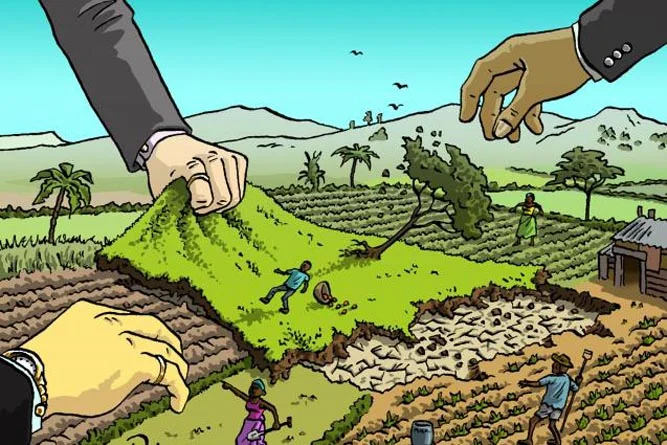
By Ishtiyaq Mohiuddin
STATE land //Khalisa//Government land are used synonymously, and can only be utilised by the Govt for any purpose it deems necessary! And, this land can be leased out to individuals by the Government as per the Land Grants Act.
However, Roshini Act was introduced in 2001 to give ownership of already occupied(encroached) State Land to people against payments, and revenue raised was supposed to be utilised for construction of power projects. But subsequent concessions and mismanagement resulted in huge losses to the exchequer, the scheme was scrapped, first by the Govt in 2018 & then by the Hon’ble Court in 2020. All of its record enteries were removed and ‘Intiqalaat’ cancelled.
Kah-Charai means a kind of tax one was supposed to pay against use of designated Land parcels for charaayi( livestock grazing). So, Kahcharai Land(locally GhaasCharaey) is the land supposed to be used for grazing Purposes. But decline in grazing requirements and the unavailability of state land means that the government is left with no choice but to use Kahcharai land for other public purposes.
Kahcharai Land comes under the broad category of Common Land, that also includes, land under Paths/Roads/Canals/Graveyards, etc. All types of Common Lands can only be used for common public purposes and not for any individual purposes.
Most of us have heard, “Zameenus chhu Shamilaat Saet”!
Shamilaat Land can be of two types: Jayiz Shamilaat, also called Dafa-5 Shamilaat, and refers to a part of village State Land once in the past gifted and distributed by Maharaja among locals in proportion to their quantum of then existing Milkiyat Land. Dafa-5 Land is therefore as good as Milkiyat Land.
Second type of Shamilaat Land is Najaiyaz Shamilaat or Dafa-4 Shamilaat. It refers to Kahcharai and other types of Common Land.
Interestingly, people previously in illegal occupation of State/ForestT/KahcharaiI/Common Land would approach Patwaris and ask for Intikhaab! As per Record Entries, they would be provided Initikhaab with a line written on it : “Mr X has Najayiz Qabza on this much of land”! That would strangely lend a kind of legitimacy to this illegal possession, and this Intikhaab would be used for Sale-Purchase of this land. All such illegal Record Entries were removed from records in the year 2020 as per Govt Orders, and no such Intikhaab can therefore be issued now.
Illegally and secretly, State and Kahcharai Land was being sold by people to each other at generally accepted half the rate of adjacent Milkiyat Land. And interestingly, if this illegally purchased land was adjacent to Milkiyat Land of the purchaser, he would carry out construction on this illegal land first to ‘secure it’.
An Exchange scheme was available under Land Revenue Act, that allowed a Kahcharai encroacher to offer his Milkiyat Land in exchange of encroached Kahcharai, provided, his offered Milkiyat patch was adjacent to any Kahcharai Patch, so that it could become part of Kahcharai. This Scheme was again abused, and consequently, it was removed under Land Reforms introduced after 2019.
As far as distributing the land among ‘poor & landless’ goes, my experience tells me, wherever these 5 Marlas of land were allotted, the beneficiary would occupy a lot more at that spot and then would sell it gradually, most of the times he would end up selling his allotted land of 5 Marlas as well.
Again, very interestingly, any structure raised or tree grown on State/Kahcharai/Common land belongs to the Government as per law, not to that encroacher.
PS: A UT-wide drive is going on now, but I used to carry out evictions and demolition of illegal structures of the rich & influential as Tehsildar Bijbehara and Pampore between 2018 & 2022, when not many were doing it! Always felt, more than anything else, it conveys a message and prevents further land grabbing.
Views expressed in the article are the author’s own and do not necessarily represent the editorial stance of Kashmir Observer
- The author is a KAS officer.
Follow this link to join our WhatsApp group: Join Now
Be Part of Quality Journalism |
Quality journalism takes a lot of time, money and hard work to produce and despite all the hardships we still do it. Our reporters and editors are working overtime in Kashmir and beyond to cover what you care about, break big stories, and expose injustices that can change lives. Today more people are reading Kashmir Observer than ever, but only a handful are paying while advertising revenues are falling fast. |
| ACT NOW |
| MONTHLY | Rs 100 | |
| YEARLY | Rs 1000 | |
| LIFETIME | Rs 10000 | |











